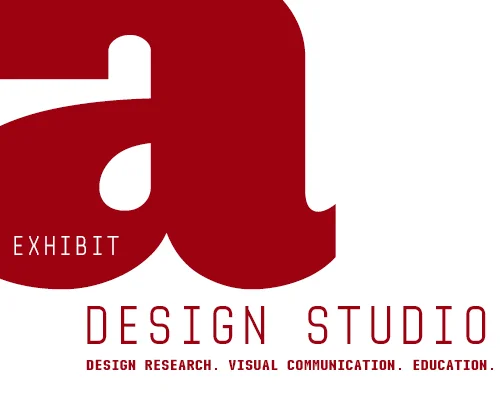Critical Cartography, Mapping as a research tool
Course Overview
This graduate level seminar uses techniques of mapping—analyzing and making meaning of raw data—as a comparative analytic tool and as a way to uncover hidden meanings between data and reality. Connected to an ongoing project in partnership with the Urban Design Center and the City of Raleigh (COR) Museum, this course will analyze, synthesize and visualize Raleigh’s history, engage in field research as comparative analysis, and investigate and reflect on the effect of the mapping process on how data is understood. Through intense observation and interaction with census data, the physical environment and the offical and unofficial archival history of Raleigh, students will engage in a rich and triangulated approach to historical and social research. They will use the tools of mapping and synthesis as a way to make meaning of their findings and explain it to the community itself. Link to 2015 Syllabus.
Learning Outcomes:
Participants leave the course with an understanding of current urban research and with a variety of mapping tools to conduct urban and community based research themselves. The course discusses research and analysis methodologies, i.e., the how, but also attempts to foreground the why. How might the mapping process uncover hidden findings or data? What role do these visualization techniques have in coding and decoding urban phenomena? What is the rhetorical value and how might we, as designers, acknowledge the argument that we make through the process of synthesis? How might mapping and the role of the designer affect the research process? What value is added or lost through visualizing complexity?
Student Work
Map Series 01: Looking at the Nature of Raleigh’s History
Research Methodology: Archival Analysis | Mapping Methodology: Spatio-Temporal Maps
Working in cross-disciplinary teams, students mapped the development of the city through 6 topical lenses (natural history, social city, physical city, economy, politics, arts and culture). In these initial maps, which look at discrete components of the city over time, students paid special attention to how scale informs and transforms the message of the map through altering the resolution and visible measurements of the systems depicted.
Map Series 02: Connecting Visible and Invisible Histories, Exposing Motivations
Research Methodology: Correlational | Mapping Methodology: Data / Network Maps
Based on findings from the first map, students identified a larger narrative they were interested in studying. Each student was assigned a set of marked and unmarked histories to incorporate into their narrative, and was expected to include additional narratives that resulted from independent research . They also looked at how the systems inherent in the event/person/place affected the infrastructural development of the city.
Map Series 03: testing theories through observational mapping
Research Methodology: Mixed Methods (Observational and Participatory Research) | Mapping Methodology: Narrative Mapping
Students will visit an identified site/area based on findings from previous maps and create a map (ala Nolli Map) that records their data. The goal of this map is to (1) test the theories and claims put forth in the previous maps and (2) find new patterns and relationships from the physical world and (3) include a survey or participatory component to collect new data.
Data Visualization
interactive visualization: Dynamic Data(2017) and Digital Imaging (2016)
Course Overview
This advanced-level undergraduate and graduate course will look at techniques of mapping and information visualization to gather, display and understand equity in Raleigh as is relates (implicitly or explicitly) to its urban development. Students look at both quantitative (statistics and numbers) as well as qualitative (observation and interpretation) methods of data gathering and presentation. Students will look at the visualization of this information from various perspective including geography, time, and history to uncover hidden patterns and make meaning of seemingly unconnected pieces of information. Students also learn techniques and devices commonly used in mapping and information graphics development to realize and visualize their information through a series of printed and digital “maps.”
Learning Outcomes:
Students will better understand how the process of distillation affects the critical analysis of design decisions as well as the proposals that designers make as an outcome of design research. Students will have a basic understanding of design research methods, including historical, data-based and phenomenological research. Students will be able to use techniques and devices of mapping and data visualization including hierarchy, proportion, directional devices, graphing methods, and grids and armatures.
Student Work
Anahid Telfeyan, Understanding the Refugee Crisis
Stephanie Huang, The Architecture of Segregation
Emma Blondin, Income Inequality in Wake County
Visualizing Data Driven Research
Visual Data, Spring 2016, 2018
Prompt: Map the literature found on Wikipedia on a given research topic in terms of where it is coming from (country, authorship, etc.) and the keyword being used. Do a second series of visualizations that explains one concept that you learned from the initial research.
Prompt: This larger-scale visualization will asked students to do a deeper dive into explaining a complex phenomena and/or topic. Using the podcast, Stuff You Should Know, students created an information visualization of the content of one episode. For the most part, this exercise visualized qualitative data and information as narrative, instructional, and educational. Choosing a Topic: Students were encouraged to choose a topic that was interesting to them. It could be directly related to their first project, or diverged but was still be related through a main umbrella interest (education, housing, etc.).
















































